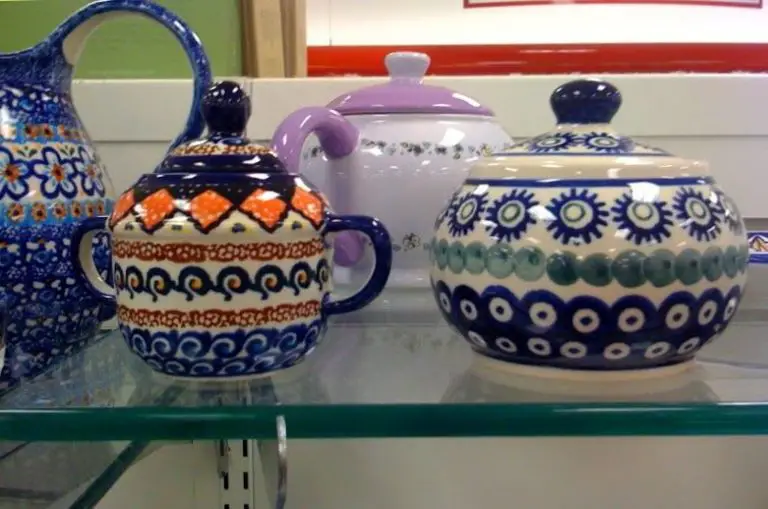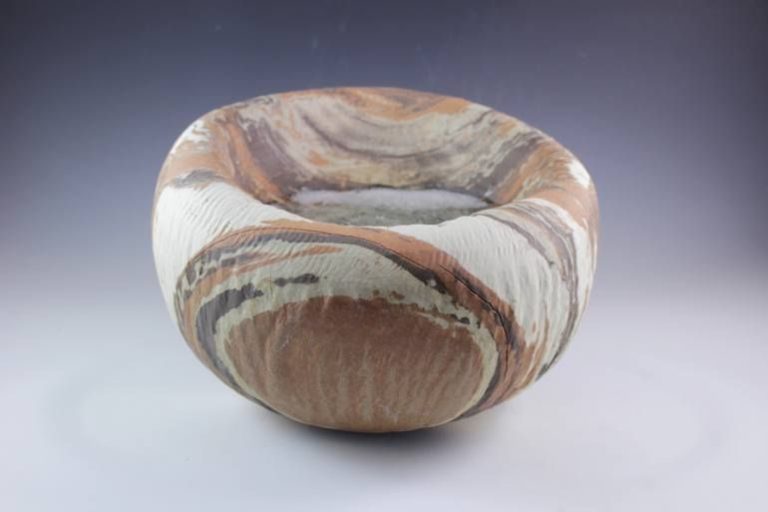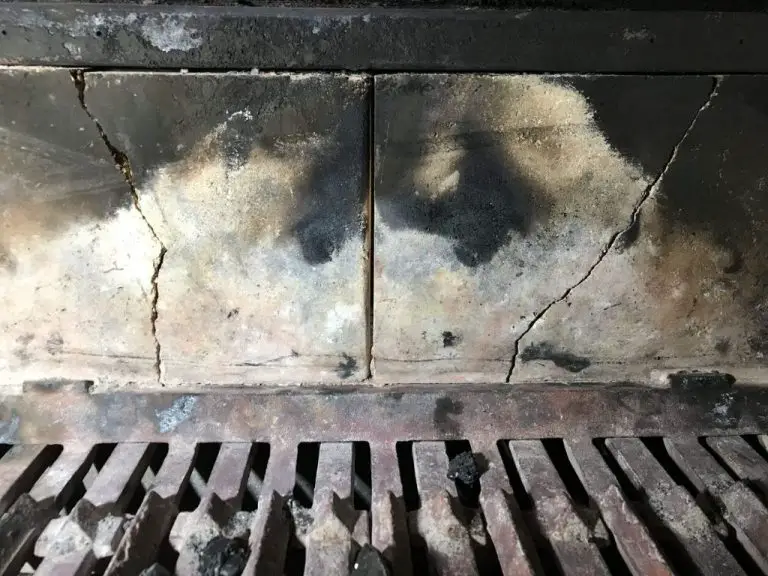Why Is My Clay Soil Blue?
Introduction
Blue clay soil is an intriguing natural phenomenon that captures attention with its vivid cobalt color. While clay soils are found worldwide, those with a distinct blue hue occur more rarely, prompting many questions about what causes the unusual coloration. When blue clay is unearthed in a backyard or found on a hike, its discovery often spurs a quest to uncover the science behind its formation.
What is Clay Soil?
Clay soil is a fine-grained earth made up of very small mineral particles. The particles in clay are less than 0.002 mm in diameter, which makes them feel smooth and slick. This gives clay unique properties that distinguish it from other types of soil.
Clay contains a high percentage of clay minerals, including hydrated aluminosilicates that give clay the ability to hold onto water molecules. The small size and plate-like shape of the particles creates a large surface area that attracts and absorbs water. When wet, clay becomes sticky and malleable. As it dries, clay becomes hard and dense.
The small size of clay particles makes it prone to compaction. Clay soils drain slowly and tend to hold a lot of water. Too much water can exclude air from clay and lead to poor soil structure. Pure clay lacks nutrients and has very little organic matter. However, the stickiness of clay means it holds onto nutrients well. Clay soils are also prone to becoming waterlogged in wet conditions.
What Causes Blue Color in Clay?
The blue or greenish hue of certain clay soils is primarily caused by iron oxides. Iron occurs naturally in soil, and when exposed to water and oxygen, it forms colorful iron oxide compounds that can create blue, green, red, yellow, and brown tints in the soil.
One common blue iron oxide mineral found in clay soils is vivianite. This forms when iron reacts with phosphate minerals under waterlogged conditions where soil oxygen is limited. The lack of oxygen causes the iron to reduce from the ferric (Fe3+) to the ferrous (Fe2+) state, and combine with available phosphate to form blue vivianite crystals.
Therefore, blue and green hues in wet clay soils are mainly an indicator of iron interacting with soil water and minerals. The more iron oxides present, the more intense the blue coloring will appear.
Blue Clay Around the World
Blue clay can be found in many locations across the globe. Some of the most famous deposits are located in Wyoming, USA and Dorset, England. The blue clay of Wyoming is found near the base of the Bighorn Mountains and has a distinct blue-gray color. This clay has been used by Native American tribes for centuries to make pottery and other crafts.
The blue clay of Dorset on the southern coast of England is also famous worldwide. Known as “Dorset Blue Lias”, it is prized for its vivid blue color. Historic uses of Dorset blue clay include decorative tiles and traditional cob building. Today it is often used to make clay sculptures.
Another significant deposit of blue clay is found in Marrakesh, Morocco. Referred to as “Majorelle Blue”, this vivid clay has been used for centuries to decorate buildings, pottery, and artworks around Marrakesh. The French artist Jacques Majorelle made this shade of Moroccan blue clay famous worldwide.
Other countries known for their blue clay deposits include China, France, Germany, Greece, Japan, Malaysia, and Turkey. While chemical composition can vary, blue clay tends to be highly prized for its unique coloring and plasticity. Traditional and contemporary uses range from structural building materials to fine pottery and sculptures.
Testing for Blue Clay
There are a few simple tests you can do to identify whether you have blue clay in your soil:
Mason Jar Test: Take soil samples from around your yard and place them in separate mason jars filled about halfway with water. Shake the jars to break up the soil and let them sit overnight. Clay particles will settle to the bottom, while organic matter floats. If the clay at the bottom has a distinct blue, green, or blue-gray color, you likely have blue clay.
Ribbon Test: Take a moist ball of soil in your hand and roll it into a cigar shape. Gently squeeze the soil upward into a ribbon shape. Clay soils can form a ribbon 1-2 inches before breaking, while sandy soils won’t form a ribbon. If the soil forms a slick, flexible ribbon with a blue-green tint, you have blue clay.
Scratch Test: Use your fingernail to scratch the surface of a moist soil sample. If it leaves a shiny blue-green streak, that’s an indication of blue clay’s slick, dense texture.
Performing these simple jar, ribbon, and scratch tests on soil samples from around your yard can help identify if blue clay is present before deciding how to amend and improve the soil.
Working with Blue Clay Soil
Blue clay soil presents both challenges and benefits for gardening and agriculture. The dense composition and poor drainage of blue clay can make it difficult for plant roots to spread and receive oxygen. However, blue clay is also very nutrient-rich and moisture retentive. With proper management, the challenges of blue clay can be overcome to harness its natural fertility.
To improve drainage in blue clay, adding organic material like compost or manure is key. Natural conditioners help open up the clay structure so water can infiltrate. Building raised garden beds on top of blue clay can also improve drainage and provide added topsoil for plant roots. Incorporating sand or small gravel into the soil can create more air pockets.
Despite the drainage difficulties, blue clay’s ability to retain moisture and nutrients can be beneficial, especially for dry climates. Amending with compost helps blue clay soils hold even more moisture. Its minerals like calcium, magnesium and potassium provide essential nutrients for plants. With thoughtful soil preparation and amendments, blue clay can be an abundant growing medium.
Improving Blue Clay Soils
Blue clay soil presents some unique challenges for gardening and landscaping. The dense structure and poor drainage of blue clay makes it difficult for plant roots to penetrate and receive oxygen. However, with some work blue clay soils can be modified to support healthy plant growth.
One of the best methods for improving heavy blue clay is to add organic matter such as compost, leaf mold, or well-rotted manure. Adding 2-3 inches of organic material and tilling it into the top 6-8 inches of soil will help improve soil structure. As the organic matter breaks down over time, it releases nutrients and supports beneficial soil organisms.
Another helpful strategy is to add coarse sand to blue clay. Aim for approximately 3 parts clay to 1 part sand. The sand particles help separate clay particles, improving aeration and drainage. Incorporating 2-3 inches of coarse builder’s sand and tilliing thoroughly will create a better growing medium.
In addition to soil amendments, utilizing raised garden beds for new plantings can help. Raised beds allow control of the soil mix, improve drainage, and reduce compaction issues. Top the raised beds with a quality planting mix amended with compost.
Improving heavy blue clay takes time and repeated applications of organic matter and amendments. But with yearly top-dressing and amendments, you can convert dense blue clay into a growing medium suitable for many plants. Using smart strategies tailored to this special soil type will yield better results.
Blue Clay Hazards
While natural blue clay often contains beneficial minerals, certain contaminants or toxins may sometimes be present that can pose potential hazards:
-
Aluminum – Excess aluminum from blue clay can potentially leach into soil and water sources. High aluminum levels may be toxic to plants and pose health risks if ingested.
-
Arsenic – Arsenic and other heavy metals occur naturally in some blue clays. Consuming crops grown in contaminated soils could expose people and livestock to unsafe levels.
-
Radon – Blue marine clays can emit radon gas. Radon exposure through indoor air or well water increases cancer risk.
-
Salinity – Salt buildup in blue marine clays creates overly saline soils. High salinity harms crops and other vegetation.
-
Acidity – Some blue clays have high acidity levels that require liming to balance pH for healthy plant growth.
Testing blue clay composition before use in gardens, construction, or other applications is advised to assess risks.
Seek Professional Input
While you may be able to live with certain issues with blue clay soil on your own, it is wise to consult local soil experts or your county’s extension office for advice in some situations:
– If you plan to build a home, driveway, or other major construction on blue clay soil, get input first to understand load-bearing capacity and prevent foundation issues.
– If you need drainage solutions beyond improving the soil structure, get professional recommendations for drainage tiles, catch basins, or gravel layers.
– If you want to plant a garden, orchard, or landscaping on blue clay soil, ask for input on amendments to improve fertility and avoid stunting plant growth.
– If you notice foundational, slope, or runoff issues that may relate to expanding and contracting blue clay soil, consult a geotechnical engineer for an assessment.
– If you need help interpreting soil test results and recommended quantities and application methods for soil amendments.
– If you are unsure about the safety of blue clay for growing edible plants, building, or playing in, seek qualified opinions first.
While blue clay soil can often be managed at home, don’t hesitate to tap into local expertise when needed, as the recommendations will be tailored to your specific conditions.
Conclusion
In summary, some types of clay soil can appear blue due to the presence of certain minerals and metals that get deposited or leached into the soil. The main causes are high amounts of iron, manganese, aluminum and magnesium compounds. While blue clay can provide some benefits like water retention, it also presents some challenges for construction, drainage and nutrient deficiencies. Performing tests, adding organic matter and consulting professionals can help improve blue clay soils and make them more usable. When dealing with blue clay, it’s important to assess drainage, monitor for shifting and instability, and amend the soil properly for the intended purpose. With patience and care, blue clay soils can be worked with effectively.
Some final tips when working with blue clay soils: test the soil composition through labs, add sand or gravel to improve drainage, mix in organic matter to increase fertility, adjust pH to optimal levels, ensure proper site drainage and slope, use caution when building foundations, and seek professional guidance as needed. Addressing the unique properties of blue clay provides the opportunity to turn these challenging soils into productive, usable land.



